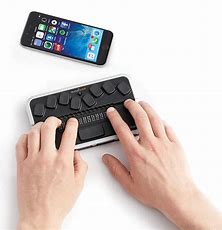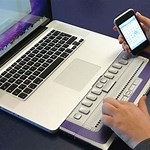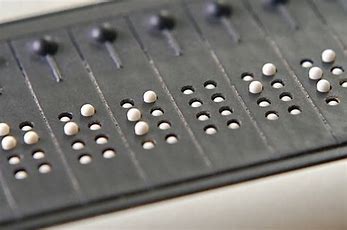Students with a visual impairment will require adjustments when handwriting in the classroom. Preferably, providing students with touch typing sessions and encouraging assistive technology use in the classroom such as ipad screen readers or laptops with Fusion installed (JAWS; text to speech program & Zoomtext; magnifier) is highly beneficial. Often when handwriting, students with low vision, or students who are legally blind, will experience both visual and physical fatigue when handwriting. Therefore, implementing an assistive technology program developed by the AVT/ TVI (teacher of visually Impaired students) or Occupational Therapist from Vision Australia enables the students to keep at the same pace as their class peers, reduces visual and physical fatigue, builds confidence, develops IT skills, enables early learning of screen readers in preparation for electronic/ refreshable brailler (eg. Brailliant Braille Display), and prepares the student for long term study and employment.
*Image 1 shows a Brailliant in use and connected to an iphone. Image 2 shows a Brailliant connected to a laptop with person also using an iphone. Image 3 shows a close up of the refreshable braille cells on a Brailliant*
However, it's not always possible for schools or families to receive access to electronic devices for students to use at home or in the classroom. Below are some tips in how you can best support a student in your classroom with low vision when handwriting.
Paper ~ provide paper types appropriate to the students needs. For example, a student may prefer a different coloured paper to reduce glare eg. white/ yellow/ sand/ light blue. The paper may need to have wider lines due to fine motor skills or low vision, thick black lines so the student is able clearly see where they should be writing, or even raised lines for students who are legally blind and require further support with this. Alternatively, a lightbox can be used. This is placed behind the students paper and creates a crisp and clear page for the student to complete their work.
Writing tools ~ A student may need to write with a heavier pencil. Often, a regular HB pencil can not be seen by a student who has low vision and changing this can make a world of difference. Visible pencils include 2B & 4B, however, if this is still challenging for a student to view a Pentel Sharpie pen or 20/20 pen provides a good black contrast without going through the page. These can be purchased through Vision Australia.
Position & posture ~ both position & posture play an important role in reducing visual and physical fatigue. This begins by ensuring the student is seated correctly by using an adjustable desk & correctly measured chair. Elbows should be resting at a 90 degree angle or greater in line with the desk. Feet should be flat on the ground, or on a foot stool, with thighs parallel to the floor. This not only helps with back support, but stability as well. A theraband can be wrapped around the legs of the chair to provide extra support if required. Students with low vision can often wriggle or continue to swing their legs around to receive sensory feedback from their environment. The theraband helps to provide this feedback. To keep the back upright, a slope board can be used which brings the work closer to the student and reduces 'hunching' or 'sloping' over the desk.
Lighting ~ Natural lighting works best although this can sometimes cause a glare issue for the student. A student with a vision impairment can reduce the glare by being seated with the window behind them. Otherwise, using a light box, LED foldable lamp positioned over the paper, or LED magnifier can assist in reading class work.
*Various images in a collage layout. All images combined show a handwriting spacer, LED lightbox, slope board and mountbatten on desk in classroom, a floor slope board, sand matt coloured paper with large print and tactile markers, theraband in use around a chair showing where feet can be positioned, adjustable desk in classroom, LED light box on a slope board with tactile letter book and material letter flashcard, LED light box in use with student placing transparent numbers in different colours on top*
If you require assistance in providing an appropriate setting for your student consult your regional AVT/TVI specialist or Vision Australia Occupational Therapist. For further information in supporting students with low vision in handwriting please visit Vision Australia by clicking here.

















Commenti